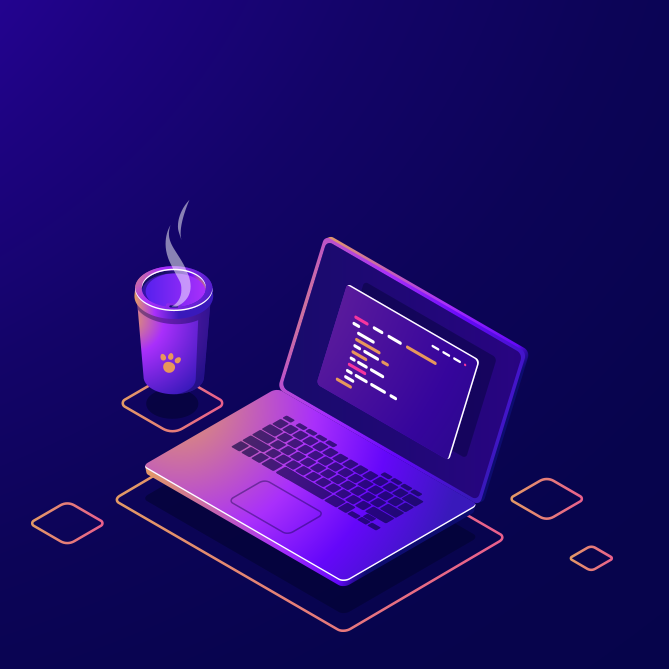The Future of Coding: 5 Programming Trends You Can't Ignore in 2025
- Harsh Thariani
- May 7
- 4 min read
Updated: May 10
In 2025, coding will evolve faster than ever before. Here are five programming trends that every developer should be aware of.
The world of coding is constantly evolving. New programming languages, frameworks, and tools emerge almost every day, pushing the boundaries of what’s possible. As we approach 2025, several key trends in programming are set to change the way we write, execute, and optimize code. Whether you're a beginner or a seasoned developer, keeping up with these trends will be essential to staying competitive in the field.

Here are five key programming trends that you should be paying attention to in 2025.
1. The Rise of Quantum Computing: A New Era for Coders
Quantum computing is still in its infancy, but by 2025, it will have a significant impact on how developers approach coding. Unlike traditional computers that use binary (0s and 1s) to process information, quantum computers leverage the principles of quantum mechanics, such as superposition and entanglement, to perform complex calculations at unprecedented speeds.
For programmers, learning quantum computing languages like Qiskit, Cirq, and Quipper will be crucial in order to harness the power of quantum systems. Quantum computing will unlock new possibilities for applications in fields like cryptography, artificial intelligence, and machine learning. However, as powerful as it may be, it's still highly specialized, so understanding how quantum computing can complement traditional programming will be an important skill for 2025.
Why It’s Important:Quantum computing has the potential to revolutionize the coding world. Engineers and developers who understand how to work with quantum algorithms will have an edge as this technology becomes more mainstream.
2. The Growth of Low-Code and No-Code Platforms
In 2025, low-code and no-code platforms will continue to grow in popularity, allowing developers and even non-developers to build applications without writing extensive lines of code. These platforms use visual development interfaces, drag-and-drop components, and pre-built templates to allow users to create software with minimal coding knowledge.
For professional developers, this trend means focusing on building and customizing these platforms rather than writing code from scratch. Low-code platforms can also enable rapid prototyping, allowing you to quickly test and iterate on ideas without spending significant time on manual coding. This will not replace traditional development but will complement it by accelerating the development cycle.
Why It’s Important:Low-code and no-code platforms are becoming vital tools for speeding up the development process. Developers who are proficient in customizing and integrating these platforms will have an advantage in a fast-paced development environment.
3. AI-Powered Development Tools: Code Smarter, Not Harder
Artificial intelligence is already a major player in software development, and by 2025, AI-powered tools will become essential for developers. These tools can assist with everything from code generation and bug detection to performance optimization and security analysis.
AI-driven platforms like GitHub Copilot use machine learning models to suggest code snippets, write entire functions, and even fix bugs, helping developers write code faster and more efficiently. With advancements in AI and natural language processing, these tools will only get more intelligent, making coding more accessible to beginners and improving productivity for seasoned developers.
Why It’s Important:AI tools can automate many repetitive tasks, freeing up developers to focus on solving more complex problems. The ability to leverage AI-powered development tools will be a significant asset for coders in 2025.
4. The Continued Growth of DevOps and Continuous Integration/Continuous Deployment (CI/CD)
DevOps and CI/CD practices have already been gaining momentum in recent years, and by 2025, they will become standard practice in most software development environments. DevOps focuses on unifying software development and IT operations to improve collaboration and streamline the development process. CI/CD allows for frequent code updates, automated testing, and rapid deployment, ensuring that software is delivered quickly and reliably.
As more companies move to cloud-based environments and adopt microservices architectures, the need for DevOps and CI/CD will only increase. Developers who are familiar with these practices will be better positioned to work in modern software development teams and deliver high-quality products on time.
Why It’s Important:DevOps and CI/CD practices are now essential to delivering software efficiently and at scale. Developers who are comfortable with these methodologies will be in high demand in 2025 and beyond.
5. The Evolution of Blockchain: Beyond Cryptocurrency
While blockchain is most commonly associated with cryptocurrencies like Bitcoin, by 2025, its use cases will expand well beyond digital currencies. Developers will increasingly use blockchain technology for secure transactions, decentralized applications (dApps), and even supply chain management.
In particular, smart contracts, self-executing contracts with the terms of the agreement directly written into lines of code, will continue to rise in popularity. Blockchain’s immutability and transparency will make it a powerful tool for industries like healthcare, finance, and supply chain logistics, where trust and data integrity are paramount.
Why It’s Important:As blockchain technology expands into new industries, developers with experience in building and deploying blockchain-based applications will be in high demand. Understanding how to implement and integrate blockchain solutions into existing systems will be a valuable skill for the future.
Takeaway:The world of programming is rapidly evolving, and staying ahead of these five trends will be crucial for developers in 2025. From quantum computing and AI-powered tools to blockchain and DevOps, the future of coding is packed with opportunities for growth and innovation. By embracing these trends, developers can stay competitive and ensure that they’re ready to tackle the challenges of tomorrow’s technology landscape.



Comments